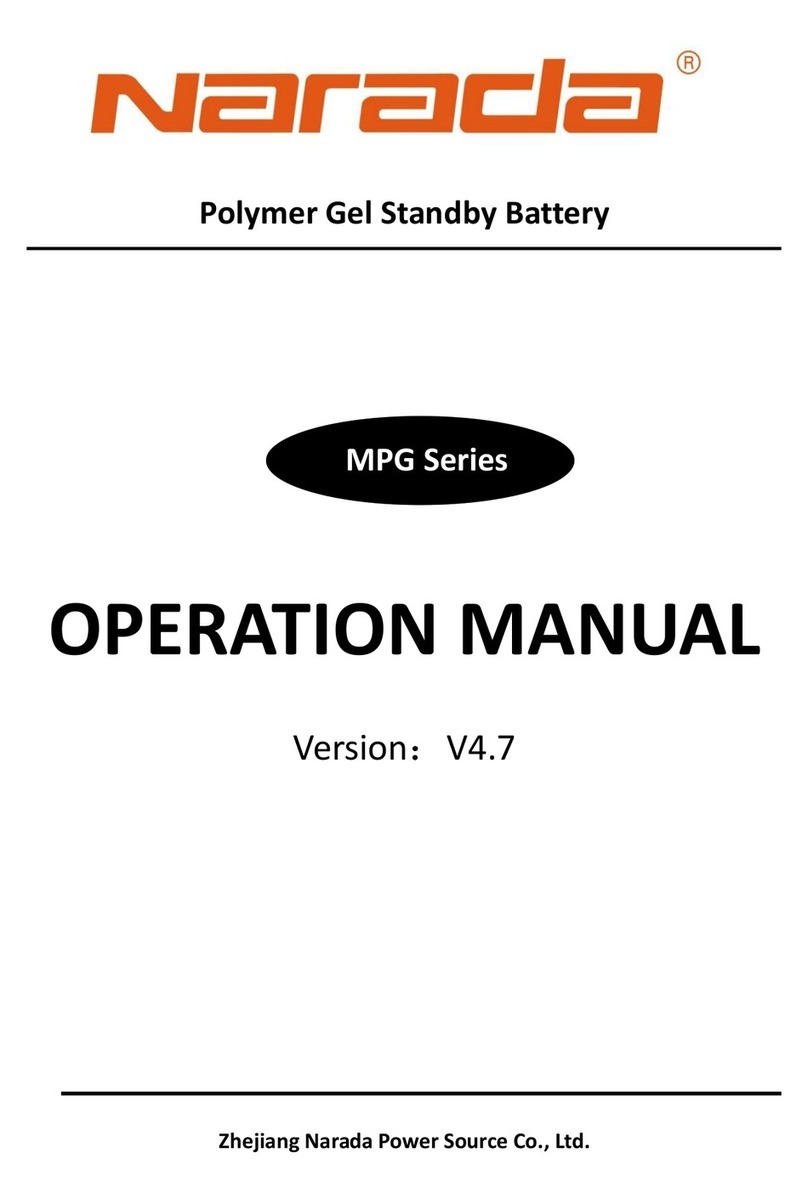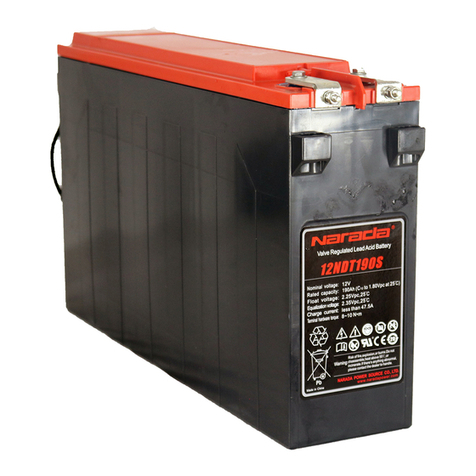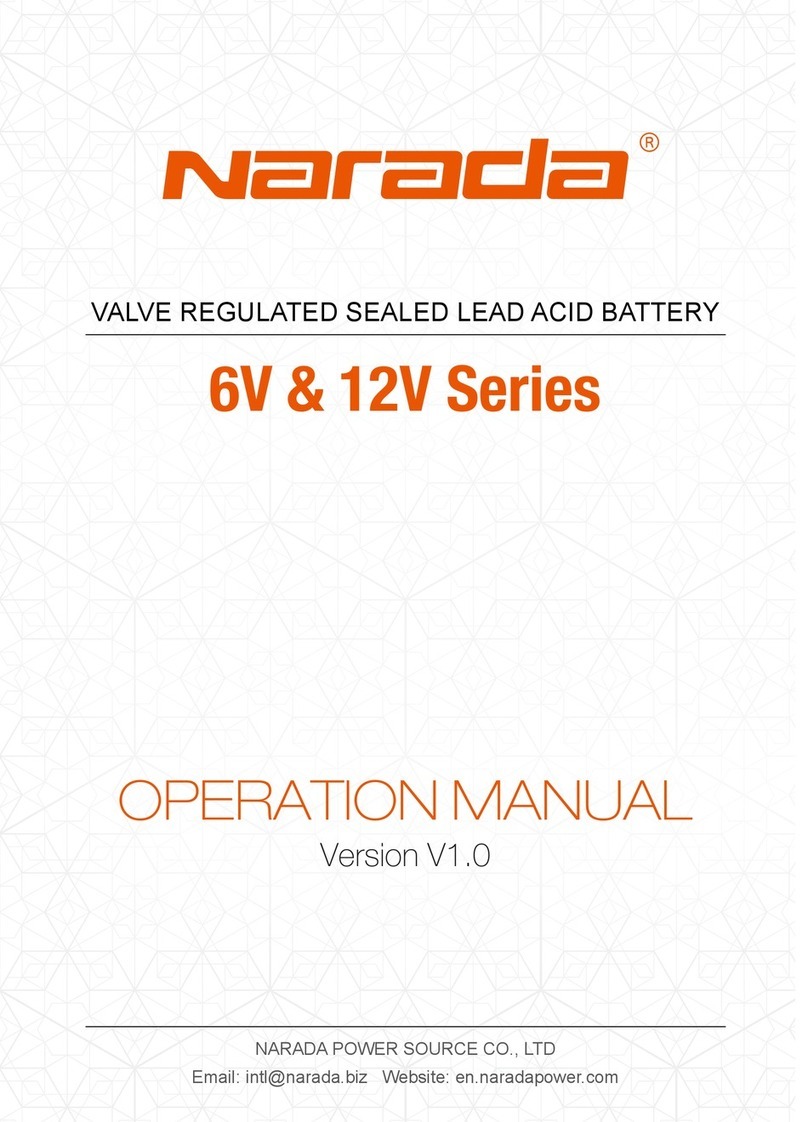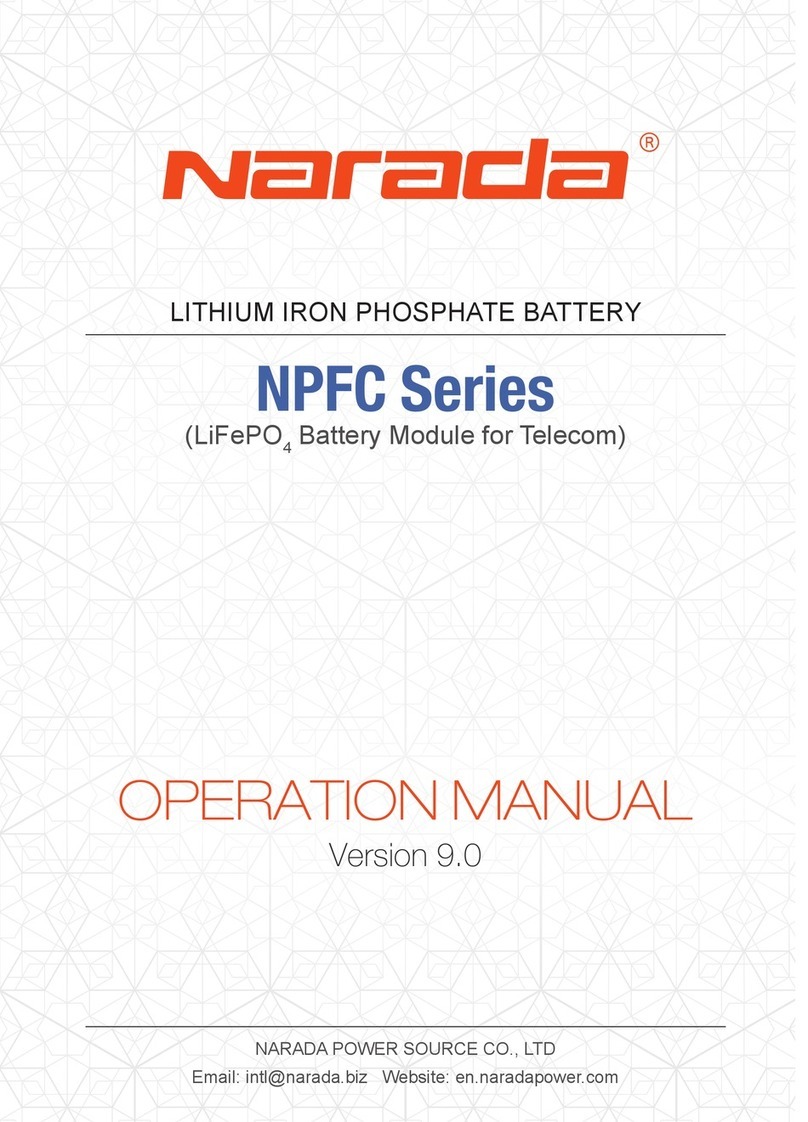
VRLA Installation, Operation & Maintenance Manual
3 Subject to revision without prior notice. E.&.O.E V2.3
3. Installation
Ambient temperature
VRLA batteries must be installed in clean, dry areas and
away from direct exposure to heat sources such as
sunlight. The optimal operating temperature range for
VRLA batteries is between 68°F (20°C) and 77°F (25°C).
The actual operating temperature range can be as wide
as -40°F (-40°C) to 140°F (60°C). Please consult the
battery’s data sheet for its specific operating temperature
range.
Ventilation
Although VRLA batteries release minute quantities of gas
during normal operations (the recombination efficiency
is >99%) they must not be installed in airtight enclosures.
The battery enclosure is acceptable as long as it affords
normal ventilation that is sufficient to keep the batteries
cool and prevent the accumulation of hydrogen gas in
case the charger inadvertently overcharges the batteries.
Finally, all batteries must be installed in accordance with
not only the manufacturer’s recommendations but must
also comply with all relevant local, state and federal
regulations.
To r q u e
It is extremely important to make sure all inter-battery or
inter-cell connectors are torqued to the manufacturer’s
recommended setting, as shown in Table 1. A loose
connection can cause problems such as incorrect charge
voltage at the battery terminals, cable overheating and
unnecessary voltage drops due to higher connection
resistance.
Te r m i n a l
To r q u e
N-m In-lb
M5-F 6±1 53.4±8.9
M6-F / M6-M 8±1 71.2±8.9
M8-F 10±1 89.0±8.9
Ta b l e 3 : Recommended torque values
4. Charging
Float voltage
The float charge voltages for the various VRLA battery
families at 77°F (25°C) are shown below, along with the
maximum recommended charge currents and the
temperature compensation coefficients. Note that the
compensation coefficient is inversely related to the
temperature – charge voltage must be lowered when the
temperature rises and raised when the temperature drops.
Table 4 below shows the recommended float charging
parameters.
Equalizing charge voltage
The equalize charge voltages for the various VRLA battery
families at 77°F (25°C) are shown in the following table.
Equalize charging should be used when batteries have
been on open circuit for an extended period of time and
need freshening. (2-3 months or longer, less than
2.13VPC and or have a battery to battery voltage
differential of 0.05VPC or greater). The equalizing charge
voltages listed in Table 4 should be limited to 16 hours.
The charge current for both float and equalizing
charge must be limited to its C5(in amps) to 1.75 VPC.
Ta b l e 4 : Voltage, current and temperature compensation
Ripple current
Since ripple currents are damaging to batteries and
shorten their life we recommend limiting the ripple content
of the charger to 0.5% RMS and 1.5% peak-to-peak of the
float charge voltage.
5. State of charge (SOC)
The SOC of a battery can be determined by measuring its
open circuit voltage (OCV) using a high quality digital
voltmeter. The battery must have been at rest preferably
for 24 hours (but for no less than 8 hours) before an OCV
reading is taken. Table 5 shows the relationship between
SOC and OCV. Batteries must be recharged once every
6 months during cooler months and every 3 months
during warmer months, or when the OCV drops to 2.10
VPC, whichever occurs earlier. See Section 2 above for
more details.
Volts per cell (VPC) State of charge (SOC)
2.12V or higher 100%
2.09 – 2.10V 80%
2.05 – 2.08V 60%
2.01 – 2.04V 40%
1.97 – 2.00V 20%
Ta b l e 5 : Relationship between SOC and OCV
6. Battery discharge
Batteries should not be overdischarged as it is detrimental
to its life expectancy. To prevent an overdischarge the end
of discharge voltage (EODV) must be limited to a value
based on the discharge rate. A low voltage cutoff should
also be included in the load circuit to prevent an
accidental overdischarge. MPINarada data sheets are
formatted to show only acceptable discharge rate – EODV
combinations. Narada does not recommend discharging
cells to under 1.60 VPC and no longer than 15 min.
Models
Volts per cell (VPC) at
77°F (25°C) Temperature
Compensation
Float Equalize
FM / GFM /
TT / NDT 2.25–2.27 2.35–2.40 ±3mV/cell/°C
(±1.7mV/cell/°F)
HRL 2.25–2.27 2.35–2.40
±3.6mV/cell/°C
(±2mV/cell/°F)
HTB
2.24 VPC
at 95°F
(35°C)
2.30 VPC
at 95°F
(35°C)
±3mV/cell/°C
variation from
35°C
NPL / HTBF
/ UDS / CLP 2.25–2.27 2.35–2.40 ±3mV/cell/°C
(±1.7mV/cell/°F)
EOS 2.25–2.27 2.35–2.40
±3.6mV/cell/°C
(±2mV/cell/°F)






























